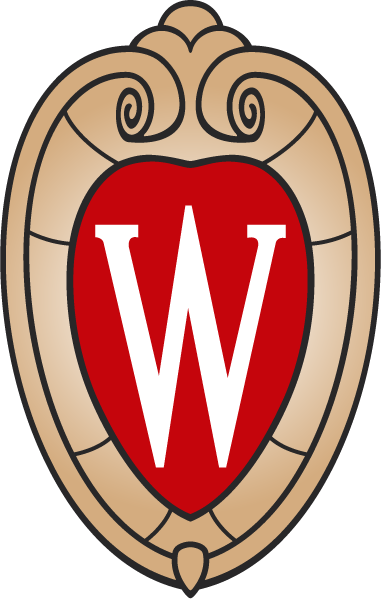
Course Overview
This course explores the engineering principles and safety standards behind overhead distribution line design, focusing on compliance with the revised NESC. Through practical group exercises and real-life design problems, participants will explore conductor selection, structural loading, guying, and grounding. Engineers will leave with a clear understanding of how to balance performance, safety, and cost in overhead distribution systems.
Learning Outcomes
- Apply NESC standards to ensure safe and compliant overhead distribution line designs.
- Calculate conductor tension, sag, and structural loading for various environmental and operational conditions.
- Select appropriate guying methods, grounding systems, and structural components based on mechanical and electrical requirements.
Who Should Attend?
- Engineers, designers, and technicians involved in utility, industrial, or institutional power distribution.
- Safety personnel, inspectors, and supervisors responsible for overhead line compliance and performance.
- Contractors and consultants seeking to enhance their understanding of NESC requirements and practical design strategies.
Additional Information
This class requires the NESC 2023 code book.
It can be purchased in print or PDF format at Techstreet: IEEE C2-2023 National Electrical Safety Code
Earn 2.0 CEUs, 20 PDHs with this course.
Course Outline
Introduction to Overhead Distribution Lines
- Conductors, structures, equipment
- Voltage, current, and power ratings
- Electrical loading (normal and contingency)
- National codes and standards
- Rights-of-way and joint-use
Introduction to the National Electrical Safety Code® (NESC)
- NESC purposes, compliance, organization, and content
- NESC general requirements for overhead lines
Conductors
- Physical and electrical characteristics
- Transverse, vertical, and tension loads
- Sag and tension characteristics
- Sag calculations with the ruling span
NESC Clearances
- Between structures
- Conductors to ground, other conductors, buildings
- Climbing and working spaces
Structure Loading
- Determination of conductor weight span and wind span
- Forces, moments and loading trees
- NESC grades of construction
- Structural loading and strength factors
Guying
- Guying methods and requirements
- Guy strand types, sizes and selection
- Anchor types, sizes and selection
- Pole attachments and insulation
Structure Types and Design
- Wood, steel, concrete poles
- Structures and support arms
- Selection of structures and structural components
Insulators and Insulation Coordination
- Lightning characteristics and BIL ratings
- Electrical, mechanical ratings of insulators
- Lightning arresters and application
Grounding
- Purposes of grounding
- NESC requirements
- Grounding standards
Testimonials
"Great instructor with a lot of knowledge. It was a good introduction into what goes into the correct product and material chosen for a project."
—Mark Skull, Menasha Utilities; Menasha, Wisconsin
"Guying calcs and clearance issues are a constant problem I face every day. The problems covered in class regarding these issues will help me make better engineering decisions."
—Brandon Carr, Distribution Engineer, Leidos; Reston, Virginia
Instructors
R. John Miner
R. John Miner, PE, is president of Collaborative Learning, Inc. of Austin and San Antonio, Texas and has more than 40 years of experience in the electric utility industry. A course instructor for the University of Wisconsin for more than 20 years, Miner has conducted educational programs throughout the country and at several overseas locations. He earned a BS degree in electrical engineering with honors and an MS degree in engineering science from the University of Toledo.
M. Thomas Black
Tom is an independent consultant and course instructor in the electric and gas utility industry. His experience includes both municipal (Colorado Springs and City of Fountain, CO) and Investor owned (Progress Energy) utilities across multiple jurisdictions in Colorado, North Carolina, South Carolina and Florida. His range of experience in the utility industry covers 36 years and includes planning and engineering, standards, Construction and Maintenance Manager, Energy Delivery General Manager and Chief Energy Officer responsible for all aspects of energy acquisition including renewables, peaking and base load supply, electric transmission and distribution and gas distribution. Tom has served on the boards of RMEL and the Colorado Association of Municipal Utilities CAMU and is a member of the Institute of Electrical and Electronic Engineers. He received his bachelor’s degree from Washington University in St. Louis with honors and is a registered professional engineer in Colorado and Arizona.
Erich Schoennagel
Erich prepares educational materials and teaches a variety of programs including overhead and underground electrical transmission and distribution, NESC compliance, safety, and system performance and improvement. With CenterPoint Energy, he managed the Transmission Project Engineering group, which served the company’s needs for transmission system design, substation and telecom site improvement, and civil engineering for transmission, substation, distribution, and telecom structures. Beginning his utility career as a co-op student with Houston Lighting & Power, he gained exposure to power generation, fuel procurement, and civil engineering support. Upon graduation from Texas A&M University, he joined Houston Lighting & Power in the Civil Engineering group, where he designed structures and foundations for transmission, substation, distribution, and telecom projects. Erich then joined the Fossil Plant Engineering group where he designed civil engineering projects for the generation assets of the company, while continuing to support the projects of the power delivery system. Later he designed upgrades and new lines for the overhead and underground transmission system. Erich served for 15 years as a member advisor and later, chairman of the Underground Transmission Task Force for the Electric Power Research Institute until his retirement from CenterPoint Energy. There he directed research related to underground transmission and superconductivity. He was a board member of the annual TSDOS symposium, and a member of the American Concrete Institute 336 committee related to foundation design and construction. Erich received his bachelor’s degree in Civil Engineering from Texas A&M University. He is a registered Professional Engineer in the state of Texas.
